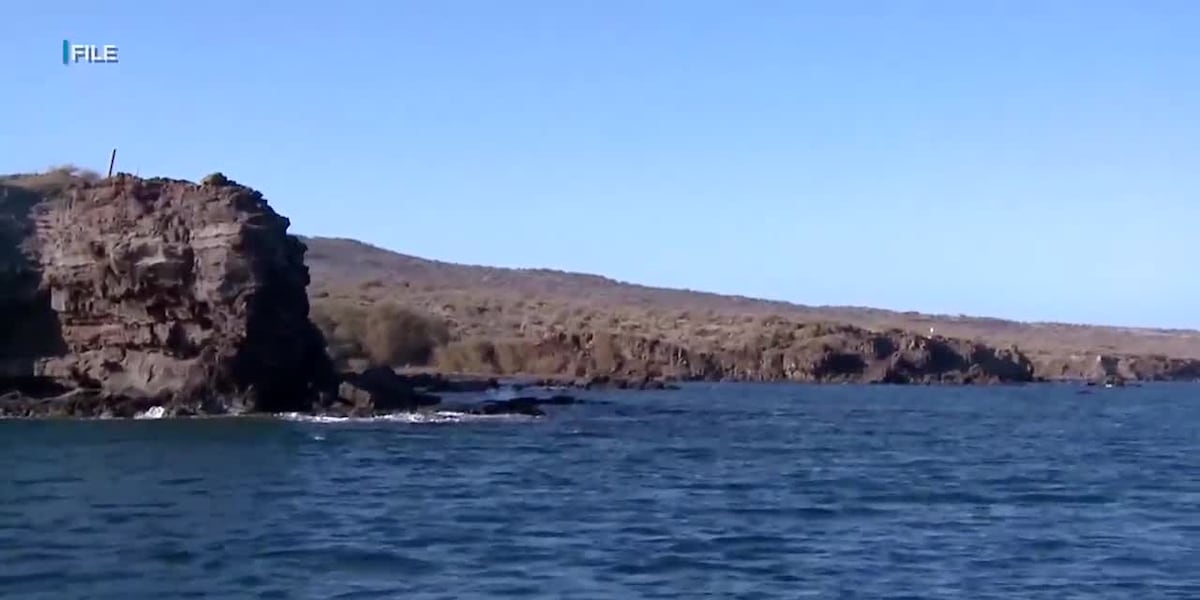Kahoolawe receives prestigious award recognizing marine conservation efforts – Hawaii News Now

Global Recognition for Kahoolawe Island Reserve’s Marine Conservation Efforts
Introduction
The Kahoolawe Island Reserve, one of Hawaii’s most remote islands, has received international acclaim for its exemplary marine conservation initiatives. This recognition aligns with the United Nations Sustainable Development Goals (SDGs), particularly SDG 14: Life Below Water, which emphasizes the conservation and sustainable use of oceans, seas, and marine resources.
Blue Park Award at the United Nations Ocean Conference
At the 2025 United Nations Ocean Conference held in France, the Kahoolawe Island Reserve was honored with the prestigious Blue Park Award. This award acknowledges marine protected areas (MPAs) that adhere to the highest science-based standards for effective conservation, directly supporting SDG 14 targets.
Significance of the Kahoolawe Island Reserve
- The reserve serves as a sanctuary for diverse marine life surrounding the smallest of the main Hawaiian Islands.
- Management of the reserve is a collaborative effort involving state authorities and Native Hawaiian leaders, integrating ecological restoration with cultural preservation.
- This integrated approach promotes sustainable resource management, reflecting the principles of SDG 15: Life on Land, by preserving both marine and cultural ecosystems.
Leadership and Vision
Michael Nahoopii, Executive Director of the Kahoolawe Island Reserve Commission, emphasized the importance of blending modern resource management techniques with Native Hawaiian cultural frameworks. This approach is designed to ensure the sustainability of the reserve for future generations, aligning with SDG 4: Quality Education and SDG 11: Sustainable Cities and Communities by fostering knowledge transfer and community engagement.
About the Blue Park Award
- Established in 2017 by the Marine Conservation Institute, co-host of the United Nations Ocean Conference.
- Recognizes MPAs that effectively protect wildlife and deliver conservation benefits to coastal communities, supporting SDG 1: No Poverty and SDG 8: Decent Work and Economic Growth through sustainable livelihoods.
- Highlights successful models of ocean conservation led by dedicated teams of ocean champions.
Current Status and Historical Context
- Kahoolawe Island Reserve is the 34th site worldwide to receive the Blue Park Award.
- It is the second site in Hawaii to be honored, following the Papahanaumokuakea Marine National Monument, which received the award in 2017.
Conclusion
The recognition of Kahoolawe Island Reserve underscores the critical role of marine protected areas in achieving the Sustainable Development Goals. By combining scientific rigor with cultural stewardship, the reserve exemplifies a holistic approach to marine conservation that benefits biodiversity, local communities, and future generations.
Copyright 2025 Hawaii News Now. All rights reserved.
1. Sustainable Development Goals (SDGs) Addressed
- SDG 14: Life Below Water – The article focuses on marine conservation efforts, specifically the protection and restoration of marine ecosystems around Kahoolawe Island, which directly relates to SDG 14 aimed at conserving and sustainably using the oceans, seas, and marine resources.
- SDG 15: Life on Land (implied) – The article mentions ecological restoration and cultural preservation, which can be linked to the sustainable management of terrestrial ecosystems and cultural heritage, aspects covered under SDG 15.
- SDG 11: Sustainable Cities and Communities (implied) – The involvement of Native Hawaiian leaders and the focus on serving future generations suggest community engagement and sustainable management of cultural and natural heritage, relevant to SDG 11.
2. Specific Targets Under Those SDGs
- SDG 14 Targets:
- Target 14.2: Sustainably manage and protect marine and coastal ecosystems to avoid significant adverse impacts.
- Target 14.5: Conserve at least 10% of coastal and marine areas, consistent with national and international law.
- SDG 15 Targets (implied):
- Target 15.1: Ensure the conservation, restoration, and sustainable use of terrestrial and inland freshwater ecosystems and their services.
- Target 15.4: Ensure the conservation of mountain ecosystems, including their biodiversity and cultural values.
- SDG 11 Targets (implied):
- Target 11.4: Strengthen efforts to protect and safeguard the world’s cultural and natural heritage.
3. Indicators Mentioned or Implied in the Article
- Marine Protected Areas (MPAs) Coverage and Effectiveness: The article highlights the Kahoolawe Island Reserve receiving the “Blue Park Award,” which recognizes MPAs that meet high science-based standards for effective conservation. This implies indicators such as:
- Percentage of marine areas protected (related to Target 14.5).
- Effectiveness of management of MPAs, measured by biodiversity health and ecological restoration success.
- Ecological Restoration Progress: The focus on ecological restoration suggests indicators related to the recovery of marine and terrestrial ecosystems, such as species population trends and habitat quality.
- Cultural Preservation and Community Engagement: The involvement of Native Hawaiian leaders and culturally appropriate frameworks imply indicators measuring community participation and integration of indigenous knowledge in conservation.
4. Table of SDGs, Targets, and Indicators
| SDGs | Targets | Indicators |
|---|---|---|
| SDG 14: Life Below Water |
|
|
| SDG 15: Life on Land (implied) |
|
|
| SDG 11: Sustainable Cities and Communities (implied) |
|
|
Source: hawaiinewsnow.com








